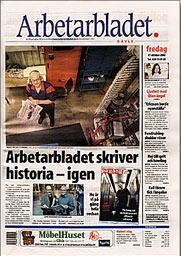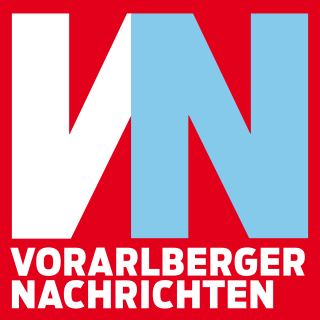
The Kronen Zeitung, commonly known as the Krone, is Austria's largest newspaper. It is known for being Eurosceptic.
Der Standard is an Austrian daily newspaper published in Vienna. It is considered a newspaper of record for Austria.

Die Presse is a German-language daily broadsheet newspaper based in Vienna, Austria. It is considered a newspaper of record for Austria.

Kleine Zeitung is an Austrian newspaper based in Graz and Klagenfurt. As the largest regional newspaper in Austria, covering the federal states Styria and Carinthia with East Tyrol, the paper has around 800,000 readers.

Arbetarbladet is a social democratic newspaper published in Gävle, Sweden.

Kurier is a German-language daily newspaper based in Vienna, Austria.

profil is an Austrian weekly news magazine published in German and based in Vienna. It has been in circulation since 1970. The magazine is sometimes considered the Austrian counterpart to Der Spiegel.
The Baslerstab is a Swiss German-language free daily newspaper.
WirtschaftsBlatt was the only daily financial newspaper published in Vienna, the Republic of Austria. The newspaper appeared every trading day from Monday to Friday in German. It was in circulation between October 1995 and September 2016.
Österreich is a national Austrian daily newspaper, based in Vienna.
The Salzburger Nachrichten is a German-language daily newspaper published in Salzburg, Austria. It has been in circulation since 1945.
The Oberösterreichische Nachrichten (OÖN) is a German language regional newspaper published in Linz, Austria.
News is an Austrian weekly news magazine published in German and based in Vienna, Austria. The weekly is the major news magazine in the country and has been in circulation since October 1992.
Täglich Alles was a German-language daily tabloid newspaper published in Vienna, Austria, between 1992 and 2000.
Delovoy Peterburg is a Russian language daily business newspaper published in Saint Petersburg, Russia. The paper has been in circulation since 1993.
Thurgauer Zeitung is a Swiss daily newspaper published in Frauenfeld, Switzerland. Founded in 1798 it is one of the oldest newspapers still in circulation.

Neue Vorarlberger Tageszeitung is German language regional newspaper published in Bregenz, Austria, which has been in circulation since 1972.

Vorarlberger Nachrichten is a German language regional newspaper published in Bregenz, Austria. It is one of the leading regional publications in the country and has been in circulation since 1945.
JydskeVestkysten is a Danish language regional newspaper published in Esbjerg, Denmark, which is among the largest publications in the country.








